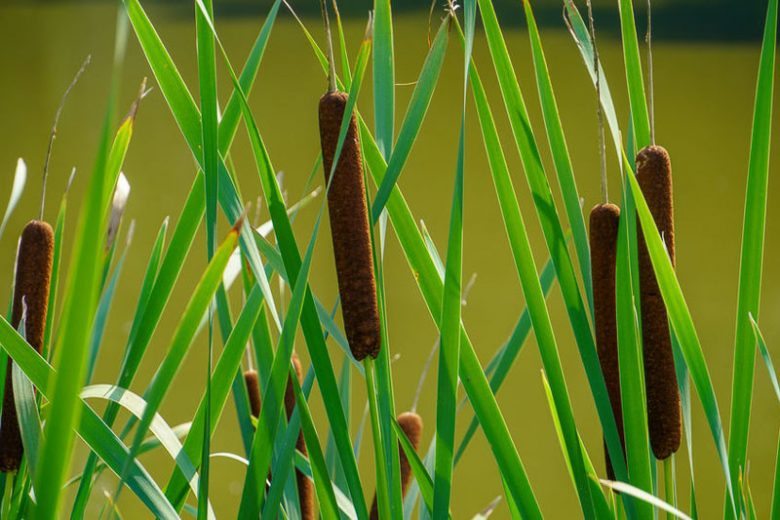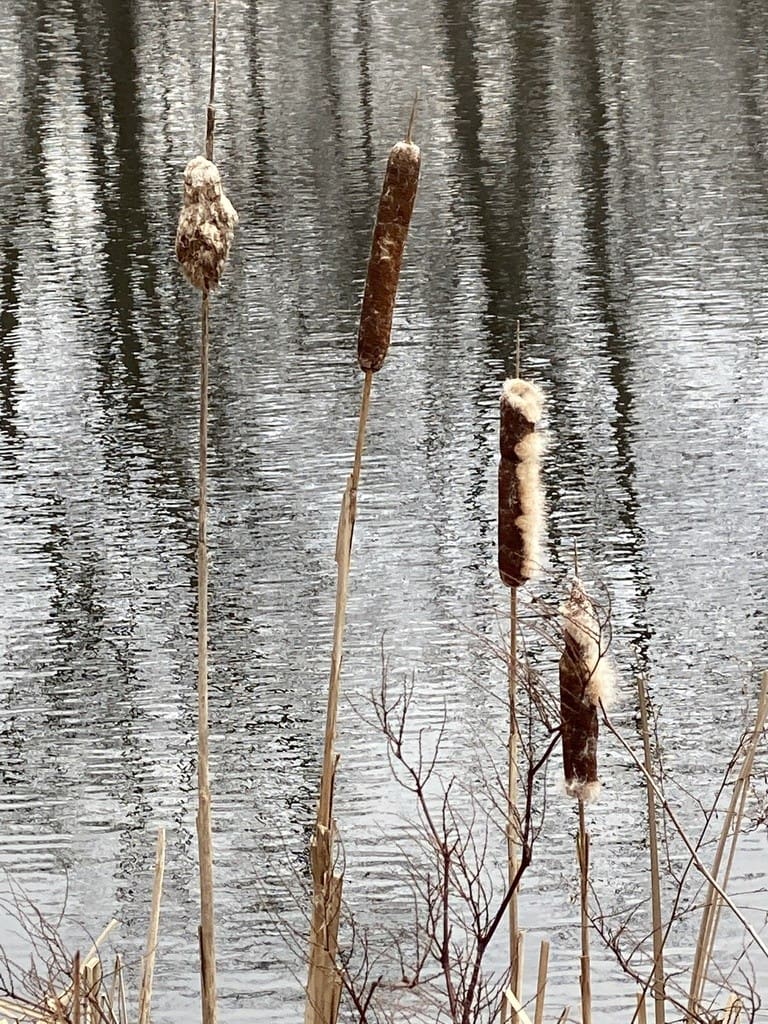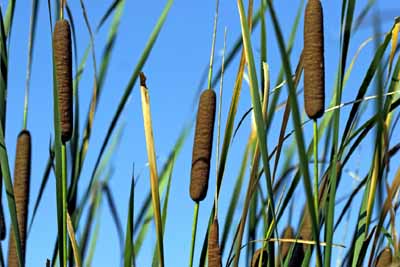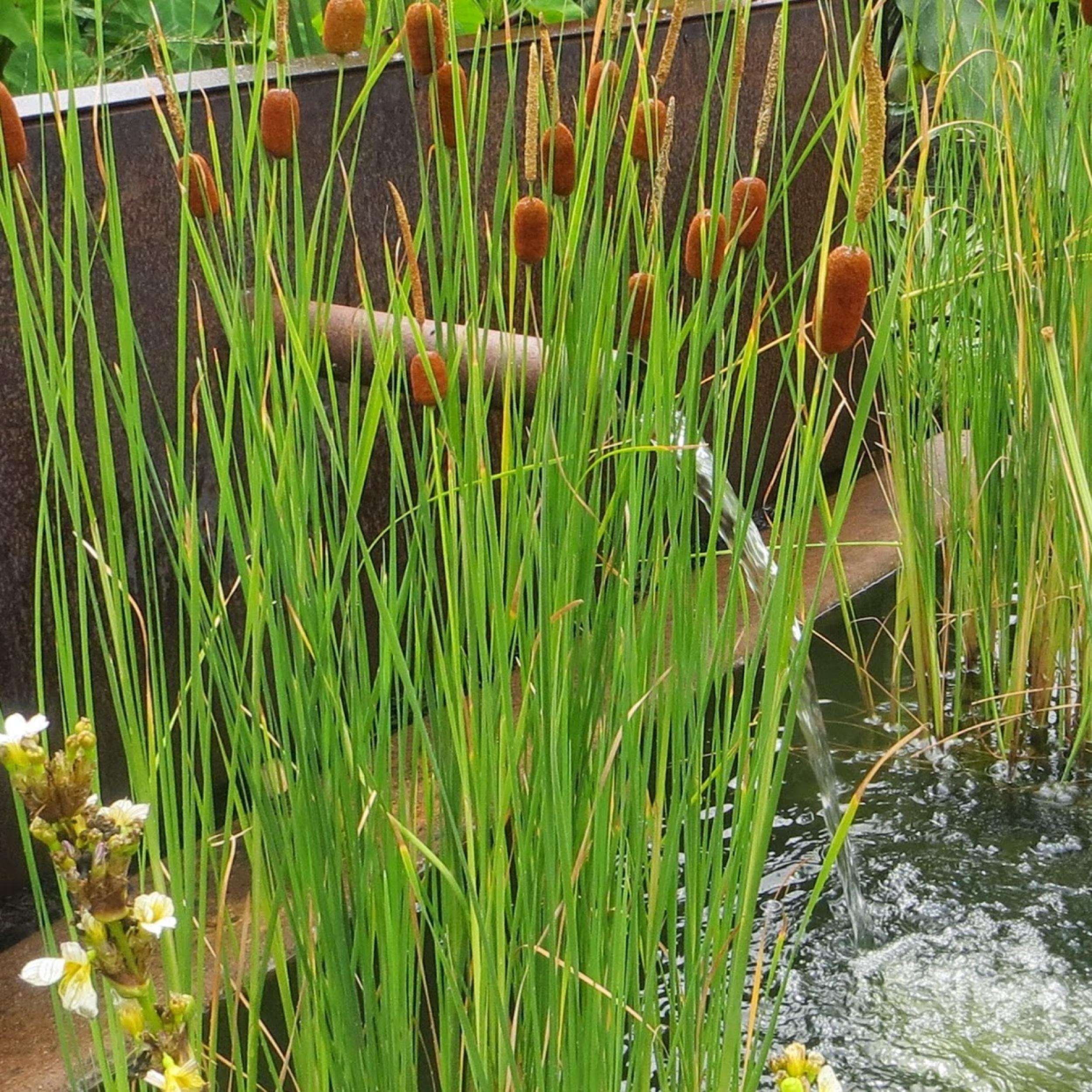In the spectrum of aquatic flora, the Grey Cattail stands as a remarkably prominent species, given its ubiquity across wetlands and marshy environments. This article elucidates the fundamental characteristics and properties of this plant, enriching your understanding of its importance within its native ecosystems, its uses, and its role in maintaining biodiversity. You’ll journey through its biological makeup while gaining insight into the delicate interconnections that allow this flora to thrive even in the most challenging wetland environments. As you journey through this informative and scholarly piece, ready yourself to behold the Grey Cattail from multiple facets of biology, ecology, and environmental science.

Overview of the Grey Cattail Plant
Your understanding of the world of botany isn’t complete without knowledge of the Grey Cattail plant, a highly versatile and resilient species with multifaceted uses.
Scientific name and other common names
Scientifically known as Typha domingensis, the Grey Cattail goes by a multitude of other names in the ecological community. This plant is also commonly referred to as southern cattail, cigar grass, and bulrush, among others.
Where it is primarily found
Grey Cattail is primarily native to tropical and subtropical regions, with extensive spread across different continents. It is usually located in waterlogged areas, including marshes, swamps, riverbanks and lakes.
Common characteristics and physical attributes
As for physical attributes, the remarkable aspect of the Grey Cattail is its height which can reach up to 3 to 10 feet. The plant has long, slender leaves while the distinct flowering spike – brownish-grey and resembling a cigar – crowns the plant.
Habitat and Growing Conditions
Preferred climate and temperature range
The Grey Cattail thrives in warm climates and it has an incredible tolerance for extreme temperature fluctuations.
Quality of water needed for growth
Being an aquatic plant, the Grey Cattail flourishes in fresh, brackish and even in somewhat polluted water bodies, demonstrating the plant’s resilience and adaptability.
Soil type and nutrient requirements
When it comes to soil type, it flourishes best in damp, marshy soils. It requires a consistent supply of nitrogen and other essential nutrients, which it usually procures from the waterlogged soil conditions it grows in.

Life Cycle of a Grey Cattail
Different stages in its growth
The life cycle of a Grey Cattail begins with the germination process. The plant grows numerous rhizomes during its lifetime, which then produce roots, stems, and leaves. The mature flowering spikes produce seeds, which are dispersed through wind and water.
How it reproduces
Grey Cattails reproduce typically via seeds and vegetatively through rhizomes. While the dispersion of seeds leads to establishing new plants, growth through rhizomes results in a thick bloom of cattails.
Rate and pattern of spread
The growth rate of Grey Cattails is relatively rapid, owing to both seed dispersal and vegetative reproduction. These plants form extensive colonies within a brief span due to their quick spreading pattern.
Key Uses of the Grey Cattail
Ecological benefits
One of the major ecological benefits of Grey Cattail is its role in improving water quality by absorbing pollutants. Its thick growth provides habitat to a variety of wildlife, offering both nesting sites and food.
Uses in traditional medicine
Traditional medicine has made use of Grey Cattails for centuries now. Its applications range from treating stomach issues to alleviating skin problems and burns.
Craft and construction uses
The strong, flexible leaves of the Grey Cattail have served multiple purposes in crafts, ranging from weaving to making mats and baskets. The plant has also found usage in construction, particularly in roofing.

Role in the Ecosystem and Biodiversity
Relationship with aquatic animals
The dense growth of Grey Cattails provides an ideal habitat for many aquatic species such as frogs, insects, and numerous birds, thereby enhancing the biodiversity of the ecosystem.
Role in water purification
Grey Cattails play an impressive role in water purification. Through a process known as phytoremediation, these plants remove harmful substances and heavy metals from water bodies, thereby improving water quality.
Contribution to soil conservation
Besides water purification, Grey Cattails significantly contribute to soil conservation. Through their extensive root system, they bind the soil together and prevent erosion.
Environmental Impacts and Concerns
Potential to become invasive
While Grey Cattails have numerous benefits, their rapid growth rates can also result in them becoming invasive in certain conditions. They can choke water bodies and overshadow other native vegetation.
Effects on local biodiversity
As invasive species, Grey Cattails can adversely impact local biodiversity by outcompeting native plants for resources, thereby disrupting the balance of the local ecosystem.
Management and control measures
To manage this potentially invasive growth, regular monitoring and control measures are required. Cutting, burning, or using specific herbicides are some of the control methods employed to manage the population of Grey Cattails.

How Grey Cattails Differ from Other Cattail Species
Comparison to common cattail (Typha latifolia)
While Grey Cattails share many characteristics with the common cattail, some notable differences exist. For instance, Grey Cattails show a greater tolerance to saltwater compared to common cattails.
Comparison to narrow-leaved cattail (Typha angustifolia)
Much like with Typha latifolia, the Grey Cattail differs from the narrow-leaved cattail mainly in terms of habitat preference. The latter is usually seen inhabiting drier areas and also has narrower leaves compared to Grey Cattails.
Distinct features and characteristics
What sets Grey Cattail apart from other species is its distinctive grey-brown flowering spike, its rapid rate of spread, and its increased saltwater tolerance.
Human Interactions with Grey Cattails
Edibility and culinary uses
Believe it or not, Grey Cattails have edible parts that have been used by humans across history. Young shoots, rhizomes, and even the pollen of these plants have found their way to human plates.
Historical significance in human cultures
The versatile Grey Cattail has cultural and historical importance too. Over the centuries, these plants have been utilized for making roofing material, baskets, mats, and used in traditional medicine.
Potential allergic reactions and health hazards
While Grey Cattails are largely beneficial, they may cause allergic reactions in susceptible individuals. Moreover, as they tend to absorb pollutants from water, consuming parts of these plants grown in polluted water bodies may pose health risks.

Scientific Studies and Research on Grey Cattails
Role in environmental science
Grey Cattails have gained attention in environmental science due to their ability to purify water through phytoremediation. Studies also focus on their potential as biofuel, owing to their vast availability and rapid growth rate.
Promising discoveries and breakthroughs
Research on Grey Cattails has led to promising discoveries in areas such as pollution control, wastewater treatment, and sustainable fuel production. Their vast potential continues to be unraveled through scientific investigation.
Current fields of study and research gaps
Current fields of study mainly encompass the plant’s phytoremediation property and potential as a renewable energy source. However, research gaps exist in understanding their invasive behavior and devising effective and sustainable control measures.
How to Grow and Care for Grey Cattails
Preferred planting strategies
Growing Grey Cattails involves planting seeds or rhizomes in water-logged soil. The plants grow best when positioned in full sunlight or partial shade.
Required maintenance and care
Once established, Grey Cattails require minimal care or maintenance. However, due to their invasive nature, regular control measures are essential to prevent them from choking other vegetation.
Troubleshooting common issues and diseases
Grey Cattails are largely disease-resistant; however, they may be infested by certain pests. Timely pest control measures are necessary to prevent damage to the plants.
In conclusion, the Grey Cattail is an amazingly resilient and versatile plant species. Despite its potential to become invasive, its benefits to ecosystems, human culture, and scientific research cannot be ignored. Proper management can harness these benefits while mitigating the negative impacts.